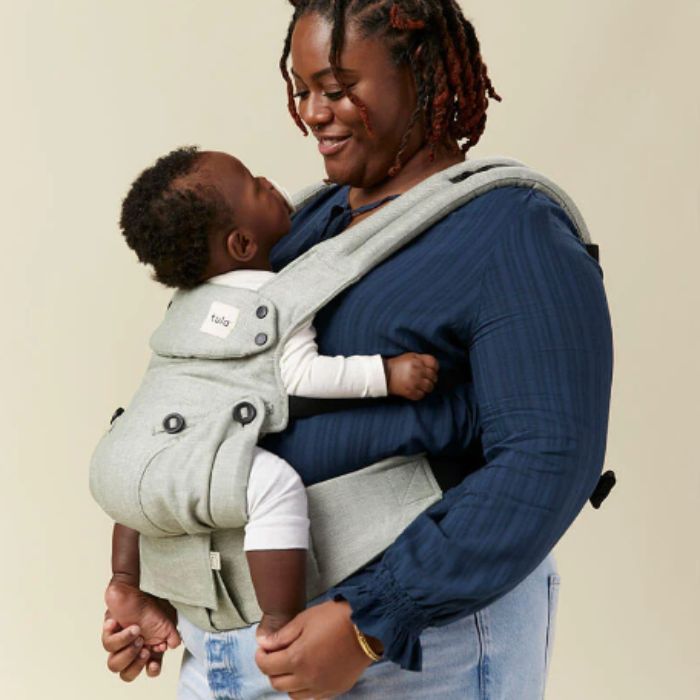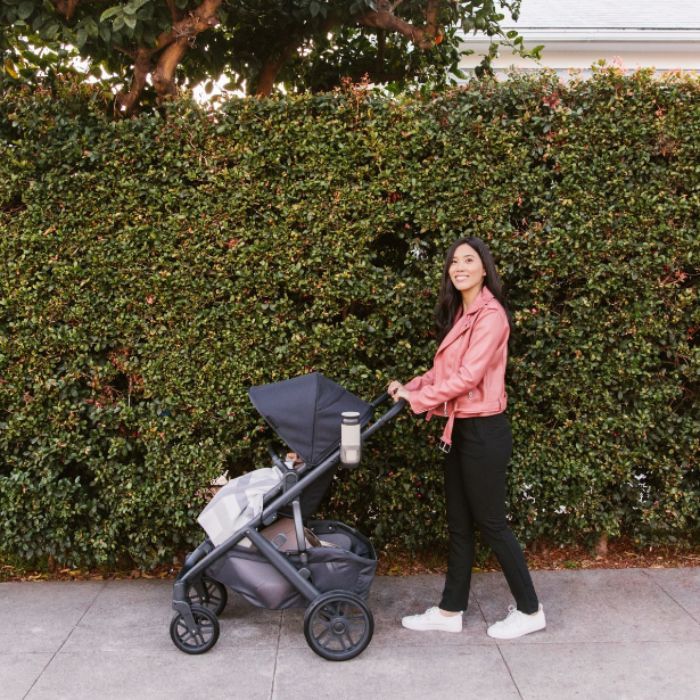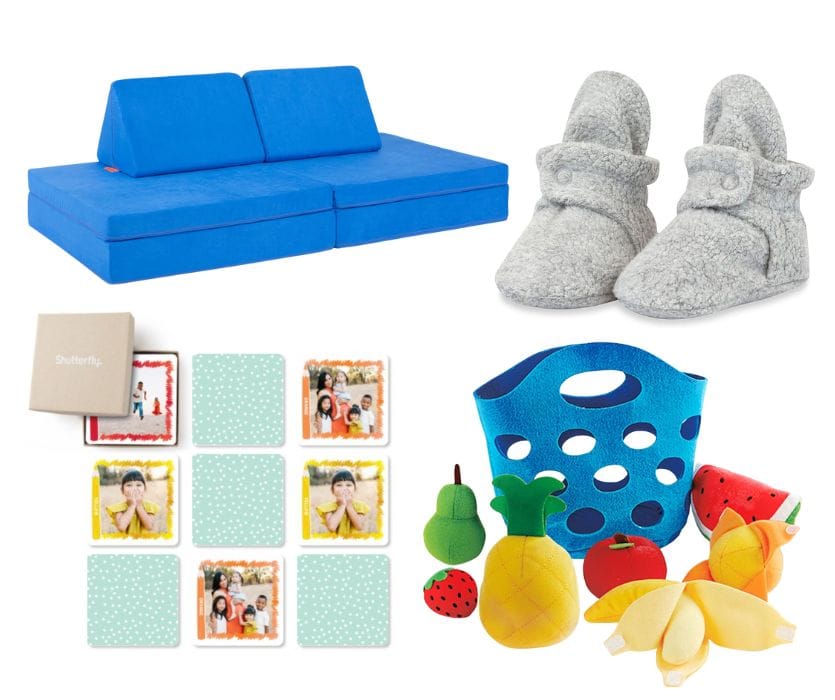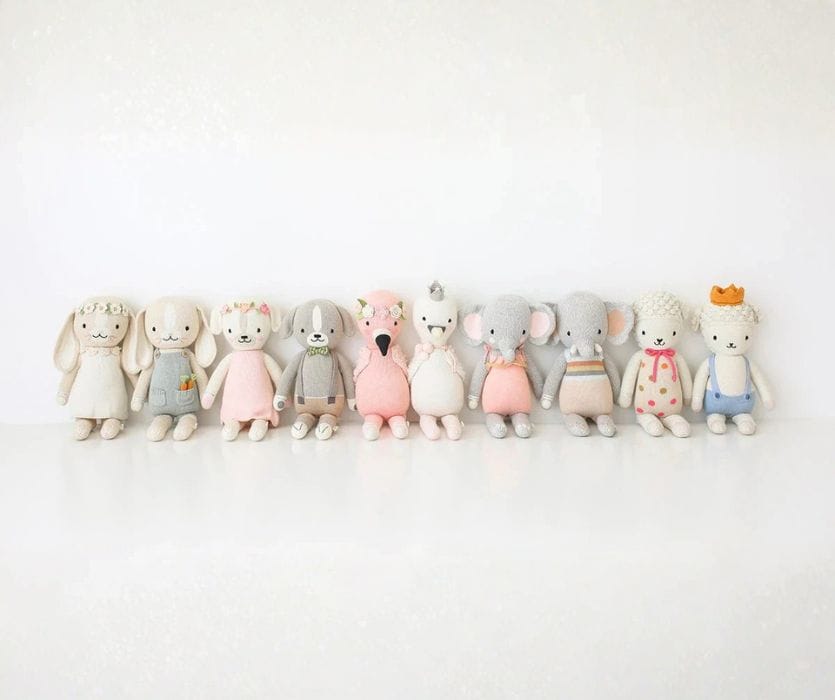Many parents of newborns ask themselves (and inevitably, the internet) how much gear is really necessary to function in a life with small kids. While strollers and baby carriers are often among the first things to get added to the baby registry, when considering space, cost, and just general necessity, it can be tempting to pick the option that gives you the best bang for your buck and forego the other.
Depending on who you ask, the answer could go either way - but thinking about your family’s lifestyle is probably going to give you a better answer than the wild west that is the comments section of the average moms group on Facebook.
What are the pros and cons of a stroller?
🟢 Pros:
- Good option for parents with knee or back issues who are unable to carry.
- Can be used for multiple kids at a time.
- Some models can convert to accommodate a bassinet for use with teeny babies.
- Travel systems can move a baby from your vehicle to the stroller with just a couple of clicks.
- Can be used throughout the baby and toddler years, as well as for older children.
- Can be used by multiple people fairly easily.
🔴 Cons:
- Requires storage space when not in use - either in the trunk of your car, or somewhere in your home.
- Heavier to move around.
- Can get pretty pricey.
- Pain in the butt to squeeze into small spaces or take up and down stairs.
What are the pros and cons of a carrier?
🟢 Pros:
- Generally light and compact, making them easy to throw into a diaper bag.
- Traditionally less expensive than a stroller.
- Easy to take up and down flights of stairs, on public transportation, and in compact or busy spaces like elevators and shopping malls.
- Keeps your baby close, easy to soothe and comfort.
- Can be worn around the house when you need to get stuff done.
🔴 Cons:
- Harder to transfer between caregivers on the fly.
- Can be a pain to transfer a sleeping baby from a car to carrier.
- Can get hot for both you and your baby.
- Some baby wraps max out at a weight of about 35 pounds.
- May not be possible for multiple people to use (due to weight, mobility, or understanding of how to use)
Do I really need both?
I think it’s safe to say that you probably could get away with either a carrier or a stroller, but again - it really comes down to your personal preference. Like many new parents, I filled my arsenal with a stroller and more than one carrier option but found myself leaning more into one camp than the other over time due to our family’s needs.

When a carrier is better than a stroller
✅ If you rely on public transportation, find yourself climbing up and down a lot of stairs and have a baby under 35 pounds, a carrier may be your best bet.
✅ Similarly, if you aren’t finding yourself leaving the house a ton, but want to keep your baby close while you’re there, a carrier will probably be your best friend.
✅ Folks who love to explore the great outdoors may find that a hiking carrier limits them less than even the most rugged stroller, so again, would probably say a carrier is the way to go.
What are my options for baby carriers?
There’s no shortage of options here. There are many different types of wraps for kids from infant to toddler size. Packs, wraps and slings are the most common picks, but there are also hybrid versions that help you get the perks from different styles. Check out this article to help you find the best baby carrier to match your preferences, but a bird’s eye view of babywearing looks like this:
- Pack carriers: arguably the most versatile, with packs made to last from infancy into toddlerhood. Often come with padded straps, lumbar support, an adjustable waistband, and sometimes even a pocket or two.
- Wrap Carriers: these are lightweight, have tons of options when it comes to adjustability, and can generally be used until your baby is around 30-35 pounds. You wrap ‘em around your body and your baby, as the name suggests.
- Hybrid Carriers: provide the snugness of a wrap with the simplicity of a more structured carrier. They have super adjustable fits, making them perfect for families where multiple people will be wearing them, and are safe for newborns and good to use for babies up to about 35 pounds.
- Ring Slings: Unlike a wrap, you just put the sling on and slip the baby in so there’s no need for tricky tying or gymnastics to get your baby secured.

When a stroller is better than a carrier
✅ If you’re using a vehicle to get from place to place and don’t want to deal with the chaos that ensues when pulling your baby out of their car seat, a stroller with a travel system may save you a lot of headaches.
✅ If you’re someone who can’t lift a baby or has mobility issues, a carrier may be a no-go.
✅ If you want something that’s easy for anyone to grab and go with, whether it’s you, a grandparent or a babysitter, strollers are familiar and easy to use for the majority of folks.
What are my options for strollers?
Tons. And the one your neighbor Ashleigh loves to use to take her baby out for 5 am jogs is not going to be the one your coworker Linda swears by when toting her grandson to the grocery store, ya dig?
Much like the whole stroller vs. carrier debate that got us here in the first place, you’ve got to consider the needs of your family before landing on your best stroller option. This article can help you narrow things down, but in a nutshell, you’re looking at the following:
- Travel Systems: usually a full size stroller that comes with the compatible infant car seat and a car seat base for your vehicle.
- All-purpose, full size strollers: can cruise on sidewalks, streets and paths and are easy to maneuver around obstacles.
- Double Strollers: great if you’ve got twins or siblings close in age. They come in a variety of configurations including side-by-side and tandem (one in front of the other, as well as convertible strollers that can switch between a single and a double.
- Lightweight/Umbrella Strollers: lightweight strollers that are easy to fold, and easy to transport, making them a great option to bring along to the airport to tote to your next travel destination.
- Jogging Strollers/Terrain strollers: built to hit the trails and whatever rough terrain comes your way thanks to their large air-filled tires and suspension systems. They usually have three wheels and a hand brake in addition to a foot-operated parking brake.
- Car seat carrier: consists of a frame only; you supply the car seat, click it into the frame, and go.
Can You Get Away With Only One?
Considering your personal situation is a good place to start when deciding if you need to shell out for both a baby carrier and a stroller.
It may be a good idea to decide which you think you’d use the most at the outset and see if you can live with it before heading out to buy the other. You may also find that what worked for the first few months of your baby’s life isn’t as useful later on.
Unfortunately, this is pretty standard procedure in the world of kids - as soon as you think you’ve got things figured out, they switch things up on ya. Good luck!
Our next reco: Top Baby Brands that Hold Their Resale Value




Leave a Comment